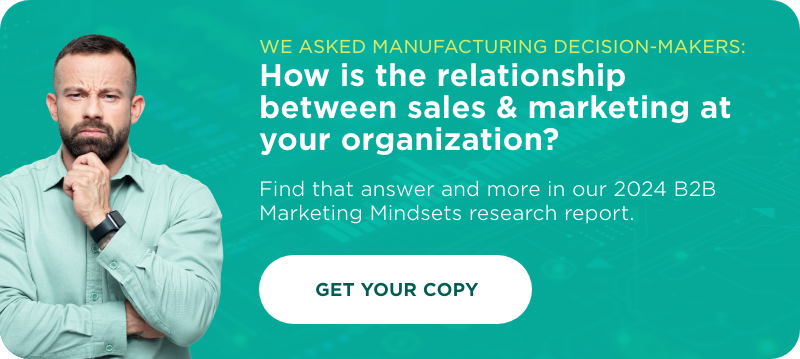
We’ve discussed how to create emails in SharpSpring, and how to get emails that get opened. But now we’ll discuss how to create emails that get clicked on. It’s not the highest metric in your email reports, no, that title belongs to emails that create conversions. But it’s definitely a close second. What it meant was that the content you sent to an email prospect actually had some interest.
So how do you create emails that get clicks? Like everything else in inbound marketing, it’s about relevancy and timing. There’s a simple formula to this, the question is, did you execute it correctly, and were you doing it right?
Create Defined Lists
If you haven’t figured out, we don’t like big lists of tens of thousands of people in them. There’s too many variables in those sized lists. They may be your target audience, but it doesn’t mean that they’re looking for what you’re offering. Sending your e-blasts out to all your customers generally doesn’t result in high open rates, or more importantly, high click through rates (CTR).
Defining your lists based on page visits, by interests from your contact forms and downloadable content will put people in groups that are more likely to not only be interested in what you have to say in your emails, but also, click through to learn more.
This is the beginning of the journey to getting clickable emails.
Keep Your Content on Point
Sure, you may want to educate someone on your other offerings, but if they showed no interest (went to those pages, downloaded content, showed interest in a contact form) why would you think they would be interested in learning. The great part about inbound marketing is that we get so many insights into behavior, that we don’t have to push things on people. If they’re interested, they’ll research it.
I’ll give you a personal example. I used to subscribe and get emails from JackThreads, a clothing company that had really good pricing if you were a member. I bought a few t-shirts from them. Not pants, didn’t look at their jeans, I don’t buy jeans online. (nothing ever fits right) But t-shirts generally fit fine, and they’re never a significant enough investment that if I don’t wear them I get offended. But I digress.
The point is, I showed no intent of ever buying a pair of jeans or shoes, coats or hats, or anything else from this company. But, what happened was I got put into the general list and shown all the sales. Nearly every day I got an email that gave me everything on sale, and not just what I wanted.
I eventually got sick of the barrage of emails and unsubscribed. A shame really. There are were probably other t-shirts I would have bought from them in the interim. I might have even bought another hoodie from them too. But they didn’t follow the rules of giving me the content I wanted and showed interest in. They treated me like another sale and not an individual.
Create Content That’s Worth Clicking On
It’s seems simple, but in a day and age where so much content is created, pushed, and consumed, it’s getting harder to create content that gets attention. It really can’t be crappy content to placate the search engines, or get you followers on Twitter. No, for you to get any level of engagement you have to make good content.
The problem with simple, is that it’s hard. Steve Jobs wrote, “Simple can be harder than complex. You have to work hard to get your thinking clean to make it simple. But it’s worth it in the end, because once you get there, you can move mountains.” Good content is simple, it’s hard to curate, and its time consuming, and above all it’s in the mix with a lot of other good content. If you really want to educate your opportunities or customers, you’re going to have to take a longer time to create the content. Give them some meat, some substance to the writing, video, or podcast, they’ll be more apt the next time to click again.
Forget About Some People
Not everyone is a good fit. If you’ve sent 4 or 5 emails on the subject that is of interest (following the guideline above) and they still haven’t even opened your emails, it’s time to say goodbye. Sometimes even sending an email that says “sorry, it must have been the wrong time” and unsubscribing them from your lists may jar them into interaction.
The fear is that the moment you stop contacting someone they’ll be ready to buy, right? Well there’s no better way to find out than saying – “I see that you’re not interested based on your behavior, so I’m saying goodbye. Thanks.” Like any relationship, sometimes it’s good to say “I think we need to talk,” to give a gut check with the person and see where you stand.
Salespeople and marketers need to learn when to break up with a prospect. If you think being in a relationship with someone who doesn’t communicate is a bad idea, why would it be any different in a business relationship? Sometimes you just have to be The Gambler, “know when to hold ‘em, know when to fold ‘em.” Kenny Rogers, understanding gambling, sales, and relationships for decades.
Conclusion
These steps are hard. They take a while to build, even in a tool like SharpSpring. The content takes a long time to curate for each of your target audiences. It’s not easy. But, it’s worth it. There are a ton of statistics that show that inbound marketing and targeted content works. The question is, are you ready to take that next step in your marketing evolution.





